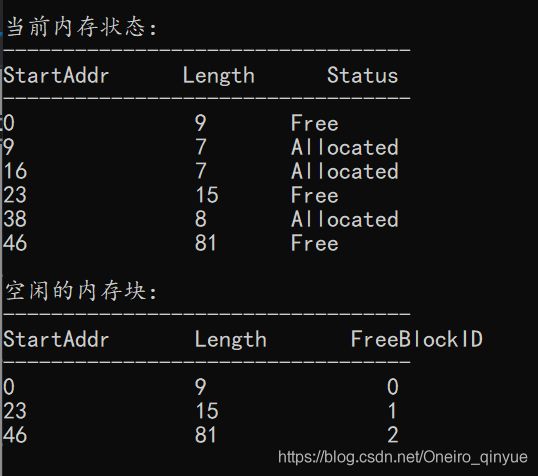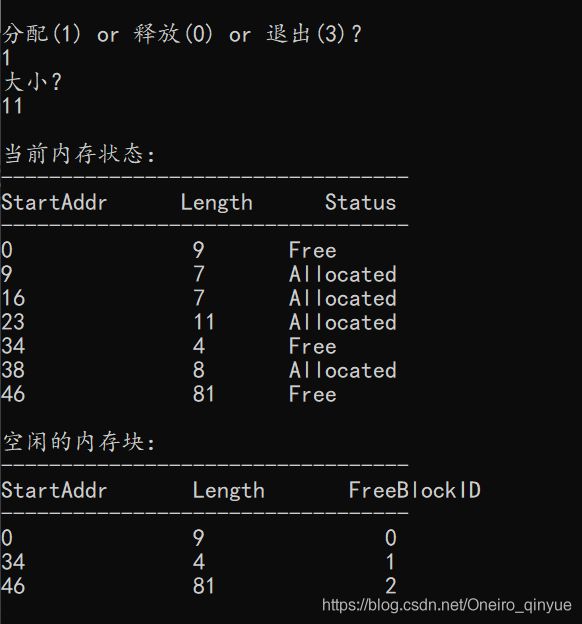os 首次适应算法FF主存分配回收
2主存空间的分配和回收
可变分区管理方式下采用首次适应算法(FF)实现主存分配和回收
[提示]:
(1) 可变分区方式是按作业需要的主存空间大小来分割分区的。当要装入一个作业时,根据作业需要的主存容量查看是否有足够的空闲空间,若有,则按需分配,否则,作业无法装入。假定内存大小为128K,空闲区说明表格式为:
- 分区号——表示是第几个空闲分区;
- 起始地址——指出空闲区的起始地址;
- 长度——一个连续空闲区的长度;
(2) 采用首次适应算法分配回收内存空间。运行时,输入一系列分配请求和回收请求。
要求能接受来自键盘的空间申请及释放请求,能显示分区分配及回收后的内存布局情况。
*基于顺序搜索的动态分区分配算法有FF(首次适应算法),NF(循环首次适应算法),BF(最佳适应算法),WF(最坏适应算法)。
所以我数据结构用双向链(空闲分区链),查找时从链首开始顺序查找。
#include "pch.h"
#include

